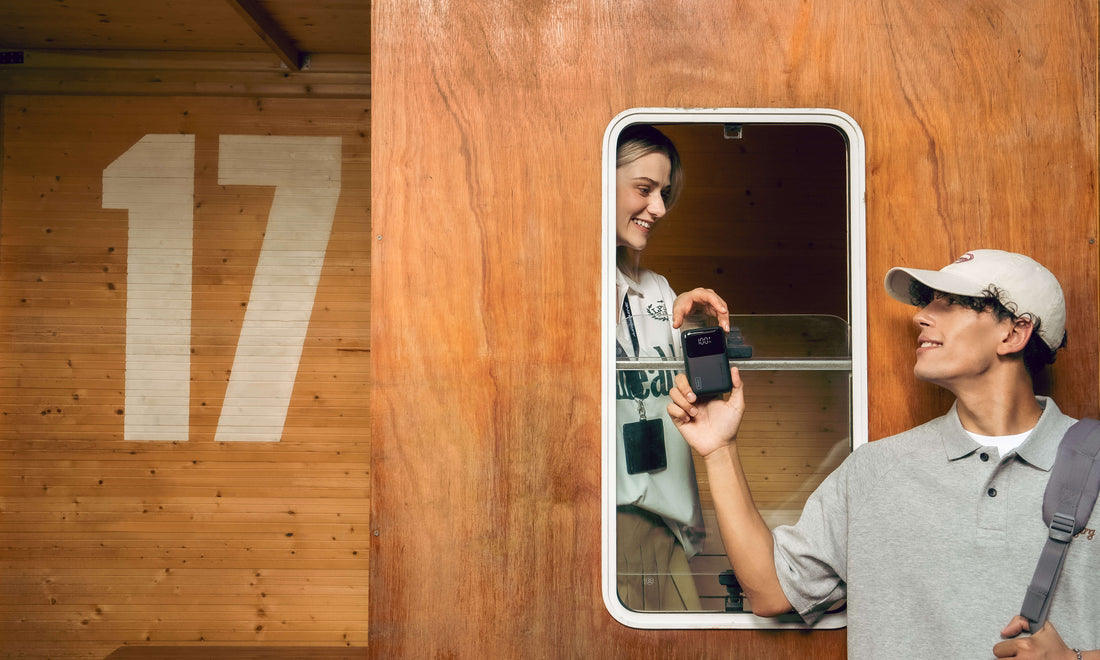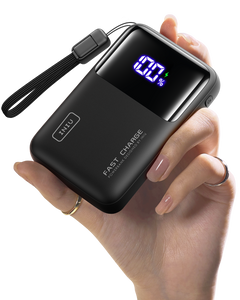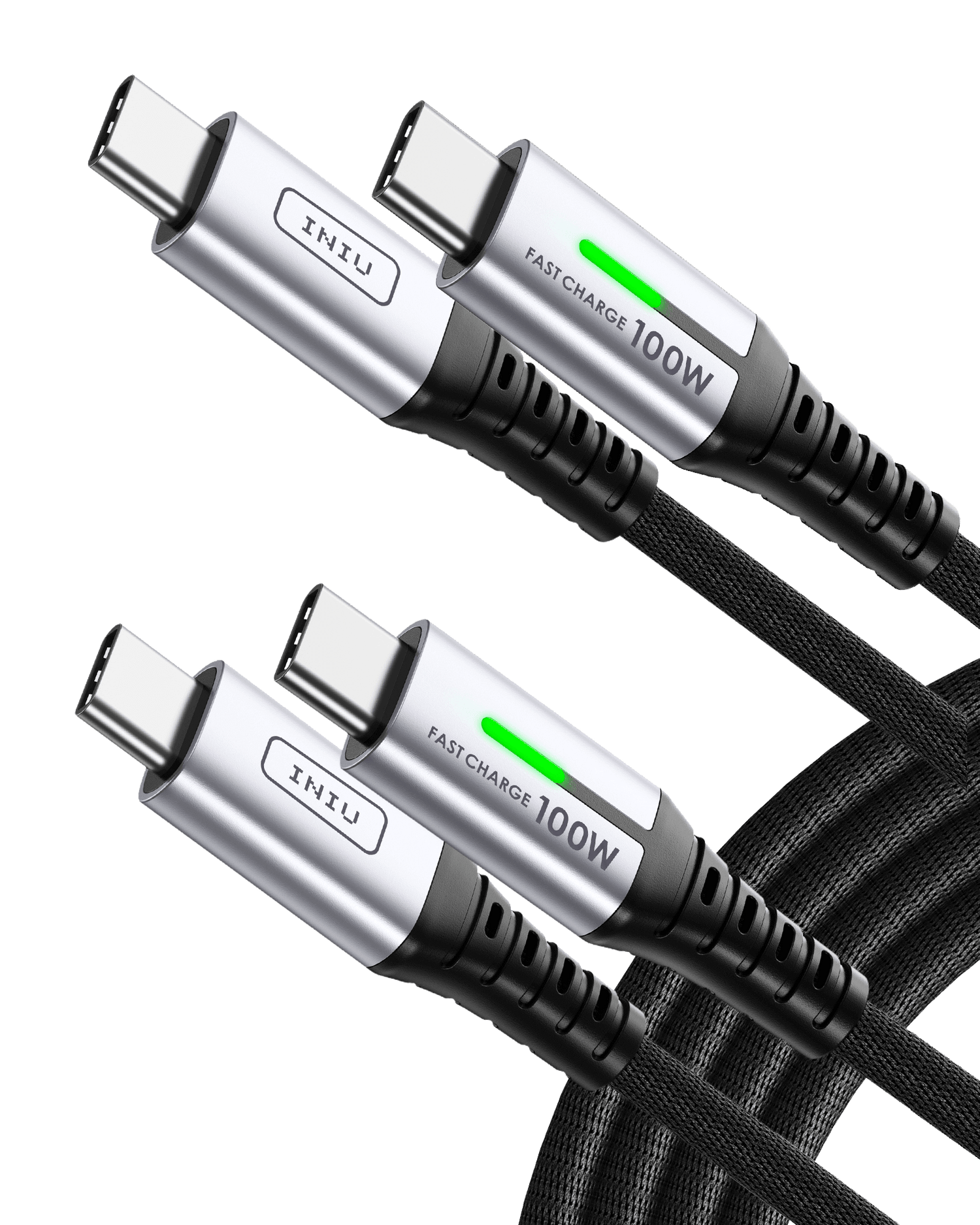
Back to School Tech Tips: Getting the Most from Your Charging Gear
Heading back to school today means more than just packing your books and laptop. Students rely on a range of digital devices—smartphones, tablets, laptops, earbuds, and smartwatches—that all demand frequent and efficient charging. With so many protocols and accessories on the market, it's easy to fall into bad charging habits or buy the wrong gear.
This article offers a clear and technically grounded overview to help students avoid common mistakes, understand how fast charging really works, and choose the most effective, compatible, and safe charging solutions for every scenario—whether in the dorm, library, or on the move.
Let's break it all down so your school year stays fully powered.
What Common Charging Mistakes Should Students Avoid?

Using Low-Power, Incompatible Chargers
One of the most frequent mistakes students make is continuing to use outdated low-output power adapters, such as 5W or 10W low-output chargers. These were suitable for older devices but are insufficient for today's smartphones and laptops, which support fast charging protocols like USB Power Delivery (PD) and Quick Charge.
Using a low-wattage adapter leads to prolonged charging times and inefficient energy conversion, which can generate excess heat. For example, an iPhone 14 Pro Max supports up to 27W input via USB PD; using a 5W charger significantly underutilizes this capability, resulting in hours of lost time.
Confusing Charging Protocols and Cable Capabilities
Not all chargers and cables are created equal. Devices and power sources must negotiate a handshake using compatible protocols. If your smartphone only supports USB-C PD fast charging but you're using a charger that only supports QC charging, charging may revert to slow 5–10W rates.
Many users also overlook cable limitations. A non-E-marked USB-C cable may not safely support 60W or 100W charging even if your charger and device allow it. Always pair a proper PD charger with certified cables that match the expected power level.
Leaving Devices Plugged in Overnight with Subpar Equipment
Though modern smartphones include internal charge controllers, repeatedly charging with inefficient adapters or in thermally constrained environments (like under pillows or in cluttered dorm sockets) can raise long-term battery temperatures. This leads to lithium-ion cell degradation, manifesting as shorter screen-on time and premature battery aging.
Choose certified fast phone chargers with features like temperature regulation, trickle-charge modes, or auto shutoff. These are often found in newer GaN chargers, which stay cooler and maintain more stable voltages during long sessions.
Using Power Banks Without Understanding Capacity or Output
Not all power banks are equipped to handle modern charging demands. Many students purchase models based solely on milliamp hours (mAh) without understanding output voltage and current ratings. For instance, a 20,000mAh unit without USB-C PD support may charge a phone at only 5V/2A—far below optimal.
For laptops and tablets, look for fast charging power banks that support 65W, 100W, or even 140W USB-C PD output. Smaller devices like phones and earbuds benefit from dual-port models that can charge multiple gadgets simultaneously without throttling.
Relying on Dorm Wall Outlets and Unverified Public Charging Stations
University wall outlets are often shared, poorly maintained, or even ungrounded. Plugging directly into these without surge protection or power management features is risky. Likewise, public USB ports (in libraries, airports, cafés) may pose security risks, including power skimming or low-voltage charging.
Use a compact PD charger or GaN charger with built-in safety certifications (UL, FCC, CE) and ideally a surge-protected power strip.
How Does Fast Charging Work?

Fast charging is made possible by increasing both voltage and current beyond conventional levels, allowing more energy to be transferred to your battery in less time. But for fast charging to function correctly, both the power source and the device must support compatible protocols that communicate over the USB connection. This communication is called the “charging handshake.”
Understanding Major Fast Charging Protocols
USB Power Delivery (USB PD) is currently the most widely supported and flexible fast charging protocol. It operates via USB-C connectors and can negotiate voltages of 5V, 9V, 15V, and 20V, with power output levels ranging from 18W to over 100W. USB PD is supported across a range of devices, including smartphones, tablets, laptops, and even certain gaming consoles.
Quick Charge, developed by Qualcomm, is optimized for phones using Snapdragon chipsets. It uses INOV (Intelligent Negotiation for Optimal Voltage) to dynamically adjust voltage in 200mV increments up to 20V. Though often found on older or mid-range Android phones, it's less common on newer devices transitioning to USB PD.
Programmable Power Supply (PPS) is an extension of USB PD 3.0. It offers more granular voltage and current control, typically used in modern Samsung and Google devices. A PD charger with PPS support allows better thermal management and more efficient charging for compatible phones.
Why GaN Chargers Make a Difference
GaN (Gallium Nitride) is a newer semiconductor material that enables smaller, lighter chargers without sacrificing power. GaN chargers run cooler, operate more efficiently, and can include multiple output ports—ideal for students who need to charge a laptop, phone, and earbuds simultaneously. Look for multi-port GaN units supporting both USB-C PD and USB-A QC 3.0.
Identifying True Fast Charging Devices and Accessories
To verify that your gear supports genuine fast charging:
In summary, understanding and matching the right fast charging protocol is essential to maximize speed, safety, and efficiency. A modern Type C fast charger that supports USB PD (with optional QC 3.0 and PPS) will cover the widest range of devices and ensure that you're charging as quickly and safely as your hardware allows.
What Are the Best Charging Gear Setups for School and Travel?

For students constantly on the move between classes, dorms, libraries, and weekend trips, having the right mix of charging gear can greatly improve efficiency and minimize downtime.
Dorm Room Charging Solutions
In shared living environments, convenience and capacity are key. A 65W or higher GaN charger with multiple ports (at least two USB-C or one USB-A + one USB-C) allows simultaneous charging of a laptop, phone, and accessories.
A 3 in 1 foldable wireless charger is especially practical for students using multiple Apple devices like an iPhone, Apple Watch, and AirPods, consolidating your nightstand setup.
Classroom or Library Carry
Lightweight portability is essential here. A fast charging power bank (10,000mAh–20,000mAh) with USB-C PD and Quick Charge 3.0 lets you top up your devices throughout the day. Pair it with a compact Type C fast charger with foldable prongs for space-saving transport.
Don't forget high-quality charging cables with nylon braiding to ensure durability.
Weekend Trips or Off-Campus Use
For extended trips, you'll need more capacity and flexibility. Opt for a 20,000mAh–25,000mAh fast charging power bank with 65W+ USB-C PD output to handle both laptop and phone charging. Combine it with a 2-port fast GaN charger for quick overnight recharges.
A wireless charging stand remains useful in hotels or shared spaces, keeping cables to a minimum and making it easier for you to charge while watching videos or participating in online meetings. Organize your setup with a slim carrying pouch containing all necessary cables and adapters, including an extra E-Marked USB-C to USB-C cable for high-wattage needs.
What Features Should You Look for in High-Quality Charging Gear?
FAQs
Q: Can I use a higher-wattage charger on a lower-power device?
Yes. Modern power delivery protocols ensure your device will only draw the required power. For example, using a 100W GaN charger with an 18W smartphone is safe. The charger and the device communicate to establish the appropriate voltage and current, preventing any risk of overcharging.
Q: Does wireless charging damage batteries?
No, as long as you're using a high-quality, certified wireless charger with intelligent temperature control and overcharge protection. Avoid third-party chargers without safety certifications and avoid using thick or metal phone cases that can cause overheating and misalignment.
Q: Is Quick Charge 3.0 compatible with USB PD?
Not inherently, since they are different protocols. However, many modern fast phone chargers and wall adapters integrate both protocols in a single unit. A dual-protocol charger can automatically switch depending on the device, ensuring fast charging whether you're using an Android phone or an iPad.
Q: Why is my power bank charging slowly?
Several reasons could be at play: you might be using a low-wattage wall adapter, a non-certified cable, or a mismatched charging protocol. Ensure your fast charging power bank supports the same protocol as your wall charger (e.g., PD or QC 3.0) and that you're using a Type C fast charger with at least 18W output.
Q: Do all USB-C cables support fast charging?
No. While USB-C connectors are universal, the internal wiring and chipsets vary. Only E-Marked USB-C cables support the full 60W–100W charging capacity required for laptops. Using a low-quality cable can throttle charging speed and may even trigger safety shutdowns on high-end devices.
Q: Should I get a 3-in-1 wireless charger for my dorm setup?
Yes, especially if you use multiple Apple or Qi-enabled devices like iPhone, Apple Watch, and AirPods. A foldable 3 in 1 wireless charger reduces clutter, ensures proper alignment, and usually includes thermal regulation.
Conclusion
Charging gear is a core part of every student's tech arsenal. Understanding charging protocols like USB PD, Quick Charge 3.0, and PPS, and investing in high-quality accessories—such as PD chargers, fast charging power banks, 3 in 1 foldable wireless charging station, and reliable charging cables—will maximize device uptime and safety.
Making informed purchases ensures that you stay productive on campus, in class, and while traveling—powered by the right tools, every step of the semester. Come explore the back-to-school charging checklist that INIU has prepared for you!




